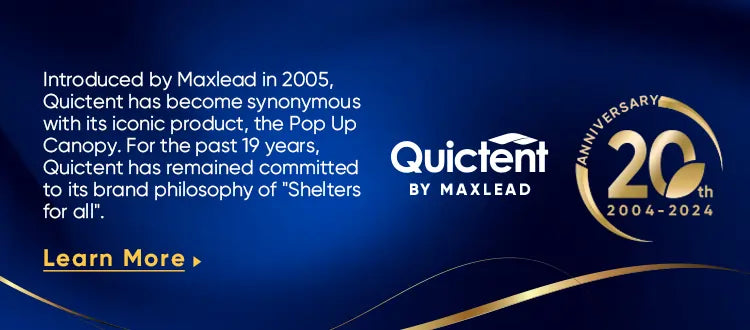During the summer months, the air dries out, and the humidity drops. To protect your plants, you move them indoors. But Even indoors, your plants can still be affected by the summer heat. Changes in temperature and environment may drive plants crazy. Adjusting water, light, and the environment can help your plants survive the summer while the heat lasts.
For more information, keep reading for our summer indoor plant care tips.

(Green Indoor Plants Decorative)
Six tips on caring for your indoor plants
Water your indoor plants frequently
Many gardening experts tell us to avoid overwatering, but during the summer months, the best measure you can take to prevent excessive temperatures from harming your plants is still to water them deeply and often.
When you notice telltale signs such as wilting, curled or wrinkled leaves, or if the soil becomes dry, it means you need to water your plants more often.
The right way to water your plants in the summer:
- Please water your indoor plants early in the morning or late in the evening to avoid leaf burn and water evaporation.
- High temperatures can cause water to evaporate from the soil faster than usual. Don't water plants too much at once. The correct way to water your plants is to do it slowly (this allows the soil to fully absorb the water).
- Bottom watering. You can try placing the plant in a bowl of water to allow the roots to fully absorb the water. Wait 10 to 20 minutes and remove the plant from the bowl.
Flowering plants need more water. Cacti and succulents need less water. You should water frequently, but you also need to keep an eye on the amount of watering.

(A Person Watering Plant)
You can insert your finger or a soil moisture meter into the soil up to 1-2 inches below and water deeply if the soil is dry. When watering, avoid splashing water on leaves and stems, which can lead to disease.
Fertilize your indoor plants regularly
Fertilizing is important for healthy plant growth. Summer is the best time to fertilize your indoor plants. When choosing a fertilizer, you should select one with an NPK ratio (N for nitrogen, P for phosphorus, and K for potassium).
Nitrogen, phosphorus, and potassium are the macronutrients that plants consume the most. However, don't fertilize your plants on the hottest or driest days, which can affect plant growth.

(fertilize plants)
You can also choose a fertilizer that contains micronutrients. This type of fertilizer will help the plant absorb more valuable nutrients. Typically, fertilizers include liquid, granular, or slow-release fertilizers, each of which has advantages and disadvantages.
Avoid over-fertilizing your indoor plants. Too much fertilizer can burn the plant's roots. If the nitrogen level is too high, the plant may grow lots of leaves but few flowers. Since you can easily over-fertilize your houseplants, follow the fertilizer instructions carefully.
Keep indoor plants out of direct sunlight
South- or west-facing windows and balconies are most likely to receive strong sunlight, and you should keep your plants away from these areas.

(direct sun lights)
Move indoor plants to shady areas away from the sun, such as porches and decks, where they will enjoy more light but no direct sunlight.
Consider placing plants outdoors
Even houseplants benefit from time outdoors. Warm temperatures and high humidity are what many houseplants need! If you're considering putting plants outside, take your plan step-by-step. Make sure outdoor temperatures are always above 50°F and nighttime temperatures are always above 65°F.
All indoor plants can be moved outside. Plants love the sunlight and fresh air outside. To acclimatize your indoor plants to the outdoors, place them outside in the shade for two hours on the first day. Then slowly increase the amount of time the plant spends outdoors over the next seven to ten days.
Most indoor plants can receive direct sunlight in the morning when it is less intense. If you will move your plants outside in the morning, begin placing them in the morning sun for short periods after five days.
Remove damaged leaves
We all want our houseplants to look lush in the summer, but sometimes there are still unusual signs. High temperatures can cause plant leaves to dry out or even turn brown.
As soon as you notice the leaves turning yellow or even curling, you should remove them from the roots.

(damaged leaves)
When you use regular scissors to cut damaged leaves, you may accidentally injure other leaves. It is recommended that you use professional gardening scissors to prune your plants.
Increase air humidity
Some gardeners install air conditioners indoors to prevent indoor plants from being affected by the heat. They believe that the cool air blowing from the air conditioner is beneficial to the plants. However, this is a wrong practice. Both cold and hot air reduces the humidity of the air.

(Humidifier)
You can increase the humidity by grouping your plants and putting a pot of water between them. You can also mist the air around your plants to add moisture. If you have enough money, consider investing in a humidifier.
Gardening products you may use
Grow tent
If you don't want your indoor plants to be "accidentally injured" by direct sunlight, you should keep them in a cool place. If you are still unsure, set up a grow tent in a corner and place the plant in it. Inside the grow tent, the plant will not be affected by direct light. You can also set up amenities such as a humidifier in the grow tent.
(Quictent grow tent)
Quictent grow tent is made of environmentally friendly materials, tested and certified by SGS, so you can use it with peace of mind. Quictent grow tents all come with a huge viewing window, which is convenient for gardeners to observe the plants.
The 8% reflective PET silver binder fabric and extra thick Oxford fabric create a favorable growing environment for the plants and prevent light from escaping. Multiple nylon straps allow you to hang lights and other amenities.
Indoor Greenhouse
The indoor greenhouse helps gardeners better organize their indoor space and care for their plants. If you prefer to grow potted plants, choose the Quictent indoor walk-in greenhouse.
(Quictent indoor greenhouse)
The Quictent walk-in greenhouse is easy to set up and you can easily place this greenhouse anywhere in the house.
Spray Bottle or sprayer
During the summer months, plants need more water to maintain their normal condition. You can use spray bottles to provide extra water to your plants. It is best to use a spray bottle with ultra-fine spray, which is the gentlest option for your plants. Spray bottles or misters are very easy to use if you need to water your seedlings.
Pruning shears
Pruning plants is part of a gardener's daily tasks. You will need a pair of gardening pruning shears to remove broken branches, leaves, and diseased or dead plant tissue. Cutting back wilted flowers will encourage the plant to produce new flowers. You should try to choose pruning shears that are made of carbon steel, which is durable and sharp and perfect for pruning plants.
Soil Tester
Soil testers provide convenience for gardeners. Soil testers help measure soil moisture so gardeners know if plants need supplemental water. Some advanced soil testers can measure the pH and temperature of the soil.









